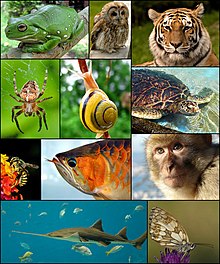Nephrozoa is a major clade of bilaterians, divided into the protostomes and the deuterostomes, containing almost all animal phyla and over a million extant species. Its sister clade is the Xenacoelomorpha. The Ambulacraria (conventionally deuterostomes) are occasionally thought to be sister to the Xenacoelomorpha, forming the Xenambulacraria as basal Deuterostomia, or basal Bilateria invalidating Nephrozoa and Deuterostomia in multiple studies. The coelom, the digestive tract and excretory organs (nephridia), and nerve cords developed in the Nephrozoa. It has been argued that, because protonephridia are only found in protostomes, they cannot be considered a synapomorphy of this group. This would make Nephrozoa an improper name, leaving Eubilateria as this clade's name.
Chordates (which include all the vertebrates) are deuterostomes. It seems very likely that the 555 million year old Kimberella was a protostome. If so, this means that the protostome and deuterostome lineages must have split sometime before Kimberella appeared — at least 558 million years ago, and hence well before the start of the Cambrian 538.8 million years ago.
Further reading
External links


 Data related to Nephrozoa at Wikispecies
Data related to Nephrozoa at Wikispecies